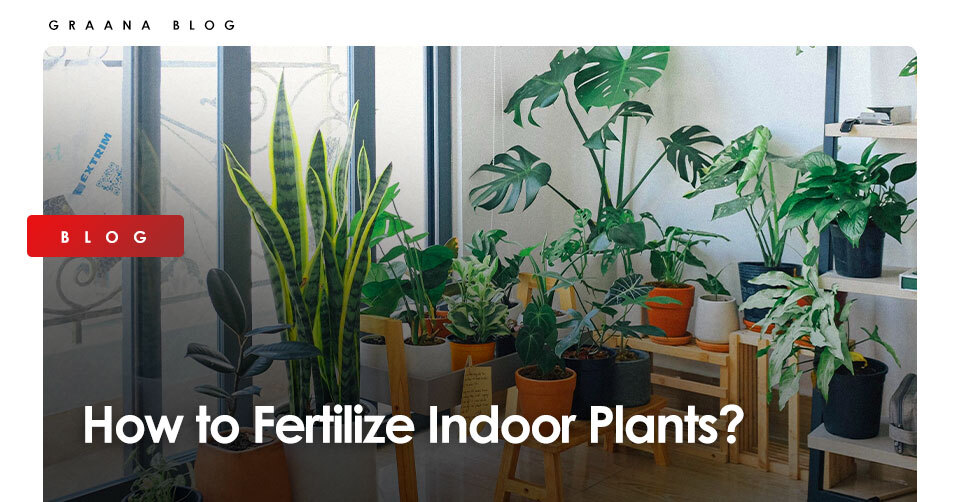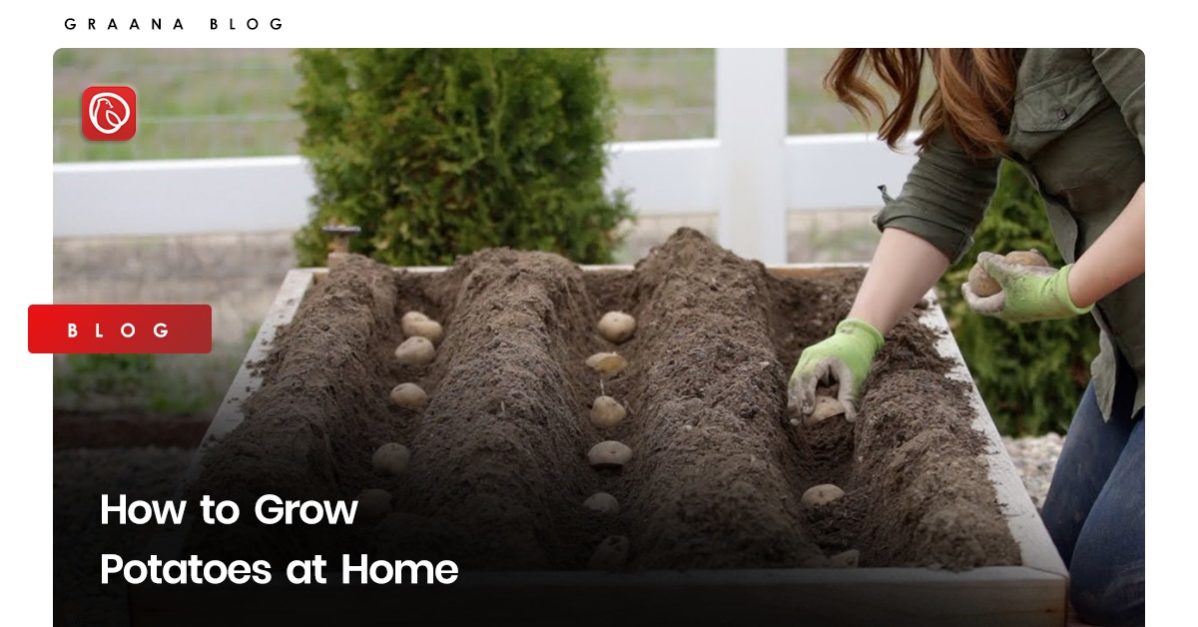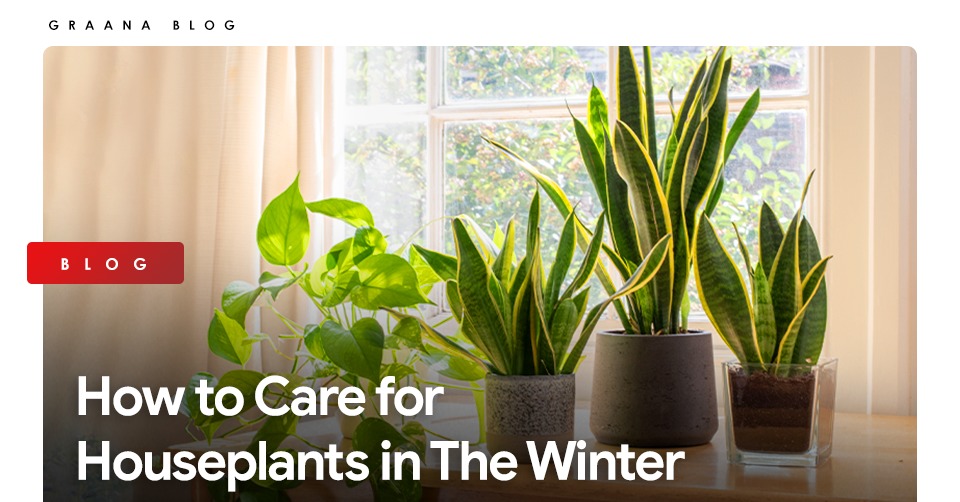To fertilize indoor plants in the best way possible, it is essential to pay attention to their environment subtly. To know when to feed the houseplants is a daunting challenge, even for long-term houseplant fertilizers. In this blog, we will be discussing the fundamental insights of houseplant fertilizer and discuss when and how to feed your houseplants.
Why Fertilize?
Houseplants must be fertilized to be healthy and long-lasting. Naturally, plants possess exposure to the nutrients which are essential for them to grow. Since your houseplants don’t have access to the outer world, they are deprived of all the minerals and vitamins present in nature. Hence, your indoor plants depend on you to provide them with nutrients to look their best. Watering your plants will flush away all the nutrients from the soil with time. Thus, for them to grow lush and healthy, it is your call as to how you restock the essential minerals for your indoor plants.
When to Feed Houseplants?
Houseplants start to wither when they need water. The leaves begin to grow faded and pale when they are not getting enough sunlight. When humidity is low, they start turning crispy, and similarly, when it is high, they begin to rot. However, knowing when to fertilize your houseplants is much trickier than it looks. Your indoor plants won’t call you out and say, “Feed me!”. However, they will indicate stagnant growth, which isn’t much noticeable by houseplant owners. So, instead of waiting for your pants to give you a signal, you must use a houseplant fertilizer appropriately based on their growth cycle.
Fertilizing is proven to be great to keep a plant healthy. So, the perfect time to fertilize your houseplant is when they are healthy and lush, to always keep them in a healthy state. Conventionally speaking, fertilizing is to be done in spring and summer and then laid off during winter. However, it entirely depends on the nature of the plant and the conditions you provide in your home. Tropical indoor plants can grow year-round with the proper care. Thus, if your tropical plants are growing, you should keep fertilizing.
Types of Fertilizers
There is a variety of houseplant fertilizers available in the market. Several houseplants respond well to specific types of fertilizers. Suppose you want to opt for a general fertilizer suitable for most indoor plants. In that case, it is advised that you buy a liquid fertilizer, an equal solution of potassium, nitrogen, and phosphorus. This way, it is ensured that all your plants receive an added boost of nutrition. It is crucial to read the instruction labels and find brands with micro-nutrients for all indoor plants.
If you’re going to use a liquid fertilizer, make sure you dilute it first. This is an essential step because direct fertilizer can damage a plant’s roots and leaves, diluting to the proper strength protects your plant. If you find yourself feeding your plants more frequently than the manufacturer recommended, dilute them more than the manufacturer suggests.
There are two types of indoor plant fertilizers: organic and chemical. Here are some examples of chemical and organic plant fertilizers.
Organic Fertilizers
- Kelp
- Fish emulsion
- Compost tea
- Worm castings
- Plant extracts
- Bat guano
- Eggshells
- Aquarium water
Chemical Fertilizers
- Fertilizer stakes
- Balanced liquid
- Slow-release
- Using a higher ratio of nitrogen is suitable for foliage plants
Ingredients in Houseplant Fertilizers
While blue water-soluble fertilizers are frequently advised, they are not the most environmentally friendly source of nutrition for your plants and do not include any micronutrients. The best houseplant fertilizer comes from naturally occurring sources of these micronutrients rather than chemicals created in a lab. To feed your houseplant kids, use a liquid or granular houseplant fertilizer produced from natural materials.
Fertilize When You Repot Your Indoor Plants
Another good way to ensure your indoor plants get all the essential nutrients is to amend the soil while repotting the plants. Using a hygienic, sterile worm casting or compost in the potting soil can make your plants look very lush and healthy. If you improve the soil, make sure to dilute any liquid fertilizer you apply even more.
If you want to keep your houseplants looking lush, promote new leaves, and see how long you can get your vining plants to stretch out, fertilizing them is the way to go.
Spring Houseplant Fertilizer Schedule
You should start fertilizing eight weeks before the spring frost. For instance, on the north side, the threat of spring frost usually passes by May. That means one can begin fertilizing in mid-March; meaning you should fertilize your houseplants in mid-March. During this time, plants start to shift from a semi-dormant state into an active growth mode.
Half-strength fertilizer treatments should be performed during the first three applications. If the product is granular, use half the amount recommended on the package. If you’re using a liquid houseplant fertilizer, dilute it halfway through. This feeds houseplants when they’re just getting ready for active growth and don’t need massive nutrients to support rapid growth.
Summer Houseplant Fertilization Schedule
During summer, it’s time to start using a houseplant fertilizer on a more regular basis. The frequency with which you apply summer fertilizer is determined by the type of fertilizer you’re using. Liquid fertilizers are applied more frequently, such as every two weeks or once a month.
Granular products are used on a less frequent basis, possibly once or twice a month.
Slow-release houseplant fertilizers take longer to break down and release their nutrients in modest amounts over time—most of these products last three to four months after a single application.
Whether you bring your houseplants outside for the summer or not, stick to this timetable.
Fall Houseplant Fertilization Schedule
It is essential to fertilize your houseplants eight weeks before the expected fall frost. Starting in mid-August, I lower the amount of fertilizer I use by half and begin stretching the period between fertilizing for around 3-4 applications, which usually takes me till the beginning of winter.
Winter Houseplant Fertilization Schedule
No fertilization is required during the winter. Indoor plants are not prone to growth during the winter season and thus should not be fertilized. If you fertilize them, it will burn out the leaves and leave your houseplants dry and pale.
Two exceptions to these rules:
If you live in a climate that does not receive regular winter frosts, continue to fertilize houseplants all winter long, but do it at half the strength and frequency of your summer applications. Again, this is due to light levels more than temperatures.
And, if you live in a tropical climate, where it’s warm all the time, keep your houseplants on a summer fertilization schedule year-round.
Conclusion
To conclude, fertilizing houseplants doesn’t need to be a complicated practice. Using the right products in the right amount according to the seasonal schedule will get the job done, and your houseplants will look greener, healthier, and lush. Get to know Lawn Grass in Pakistan.




